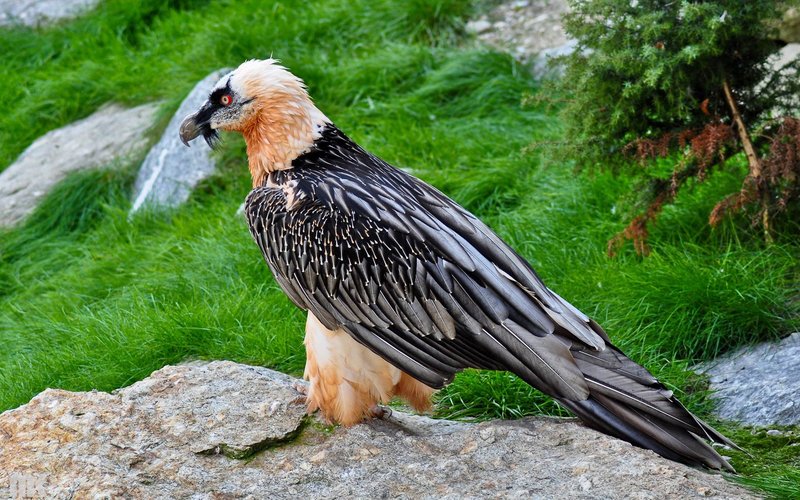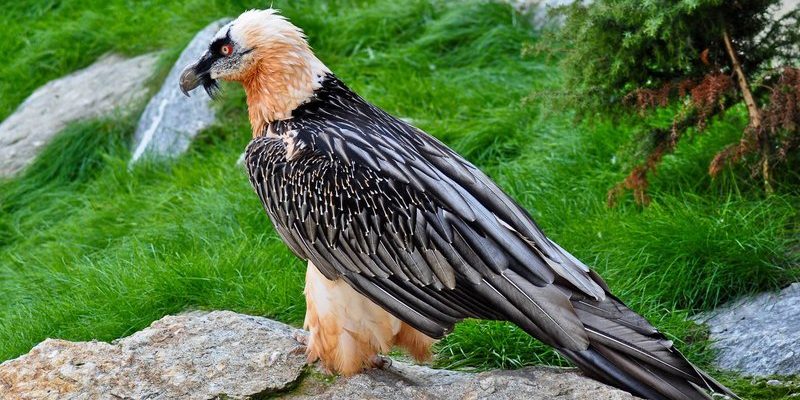
Imagine a world where there are no vultures. Decomposing remains would pile up, and that could create a messy situation for the ecosystem. By breaking down carcasses, bearded vultures perform a vital function that keeps nature balanced. In this article, we’ll explore the fascinating role of the bearded vulture in its ecosystem, from its eating habits to its breeding behavior, all while highlighting why it matters to us.
The Bearded Vulture: An Introduction
Let’s start with a quick introduction to the bearded vulture. Known scientifically as *Gypaetus barbatus*, this bird is notable for its unique beauty and size. With a wingspan that can reach up to 10.5 feet, it’s one of the largest flying birds in the world. Picture it soaring over rocky mountain ranges, its rusty-colored feathers catching the sunlight.
What truly sets the bearded vulture apart is its diet. Unlike most vultures that primarily eat carrion, the bearded vulture is a specialist when it comes to bones. That’s right; it’s a bone-eater! Feeding mainly on the bones of large animals, it can consume bones up to 2 feet long. This remarkable adaptation allows the bearded vulture to thrive in its natural habitat, even in areas where food might be scarce.
Here’s the thing: the bearded vulture’s eating habits aren’t just quirky; they have a significant impact on the ecosystem. By eating bones, the vulture helps recycle nutrients back into the soil, which promotes plant growth and sustains other wildlife.
The Bearded Vulture’s Feeding Habits
Now that we know a bit about the bearded vulture, let’s dive deeper into its intriguing feeding habits. These birds have developed a few clever techniques for hunting and eating bones. They often drop bones from great heights onto rocks to break them into manageable pieces. This process is not just a dramatic display; it’s a necessary strategy for them to obtain the nutrients locked within those bones.
You might be wondering, “Why bones?” It’s all about survival. Bones are rich in calcium and other minerals, which are vital for the vulture’s health. By consuming bones, the bearded vulture ensures its body gets the nutrition it needs to thrive in its rugged mountain habitat.
Additionally, the bearded vultures play an essential role in controlling the population of larger herbivores like deer and goats. When these animals die, the vultures quickly consume the remains, preventing any potential disease that could arise from decomposing flesh. It’s a crucial part of keeping the ecosystem clean and healthy.
The Breeding and Social Behavior of Bearded Vultures
Breeding behavior among bearded vultures is quite fascinating. These birds are monogamous, meaning they typically mate for life. They build large nests made of sticks and bones on cliffs or rocky ledges, providing a safe haven for their young. It’s a bit like choosing a perfect spot for a family home, isn’t it?
When it comes to raising their chicks, both parents are actively involved. After the female lays one to two eggs, both parents take turns incubating them. Once the chicks hatch, they rely on their parents for food and protection during their vulnerable early months. This nurturing approach ensures that the next generation has a solid chance of survival, which is critical for maintaining their population levels.
Interestingly, bearded vultures often engage in ritualized behaviors. For instance, they perform elaborate courtship displays that include aerial acrobatics and synchronized flying. These displays not only strengthen their pair bond but also attract potential mates. It’s a beautiful dance of sorts, showcasing their skills and commitment to one another.
The Bearded Vulture and Biodiversity
Biodiversity is crucial for healthy ecosystems, and the bearded vulture plays an interesting role in maintaining this balance. By consuming bones, the vulture helps with nutrient cycling. When they feed on bones, they’re not just taking nutrients for themselves—they’re also facilitating the growth of various plants and animals.
Imagine a remote area where bearded vultures thrive. Their feeding practices influence the soil quality, which in turn supports a wide range of plant species. These plants create habitats for other animals, leading to a rich tapestry of life. Without the bearded vulture, this delicate balance could be disrupted, underscoring its importance in the food web.
You might find it fascinating that the bearded vulture is also an indicator species. This means their health reflects the overall health of the ecosystem. If their population declines, it could signal larger environmental issues, prompting conservation efforts to protect not just the vultures but the ecosystems they inhabit.
Threats to the Bearded Vulture
Unfortunately, the bearded vulture faces several threats in the wild. Habitat loss is a significant concern, particularly due to human encroachment and development in mountainous regions. As their natural habitats shrink, finding food and nesting sites becomes increasingly difficult.
Poisoning is another grave threat. Sometimes, farmers use poison to control wildlife that they perceive as pests. Unfortunately, bearded vultures can consume these poisoned carcasses, leading to population declines. It’s a stark reminder of how interconnected our actions are with the natural world.
Finally, climate change is influencing the availability of prey and suitable nesting sites. As temperatures rise and weather patterns change, the habitats suitable for bearded vultures might shift, making survival even more challenging.
Conservation Efforts for Bearded Vultures
Recognizing the threats faced by the bearded vulture, several conservation efforts are underway. Organizations around the world are working to protect their habitats, ensuring these majestic birds have safe spaces to live and thrive. Conservationists are reintroducing captive-bred vultures into the wild in areas where their populations have plummeted.
Education plays a crucial role as well. Many programs aim to raise awareness about the importance of vultures in ecosystems and the challenges they face. By fostering a greater appreciation for these birds, conservationists hope to inspire future generations to protect the bearded vultures and other wildlife.
Additionally, there are ongoing research initiatives to learn more about their habits and needs. Data collected can inform more effective conservation strategies and policies. It’s all about building a better understanding of how to work with nature, rather than against it.
Why the Bearded Vulture Matters to Us All
The bearded vulture is more than just a fascinating bird; it’s a symbol of the intricate web of life that includes all species, including ours. By maintaining healthy ecosystems, these birds ultimately support our own existence. Clean air, nutritious soil, and balanced ecosystems are all benefits we receive from the natural world.
When we protect the bearded vulture, we’re also contributing to the health of our planet. These birds help regulate populations, recycle nutrients, and promote biodiversity. If we want to enjoy the beauty and benefits of nature, it’s essential to ensure that creatures like the bearded vulture can thrive.
In the end, protecting the bearded vulture is about preserving a balance. Just like each bone they consume contributes to the ecosystem, every action we take can either harm or help the environment. Let’s choose wisely.
By understanding the bearded vulture’s role in its ecosystem, we can appreciate why these incredible birds matter and what we can do to support them. Whether it’s advocating for conservation efforts or simply sharing knowledge, every little bit helps.
Embracing the beauty of creatures like the bearded vulture enriches our lives and strengthens our connection to the natural world. Let’s commit to protecting it.

